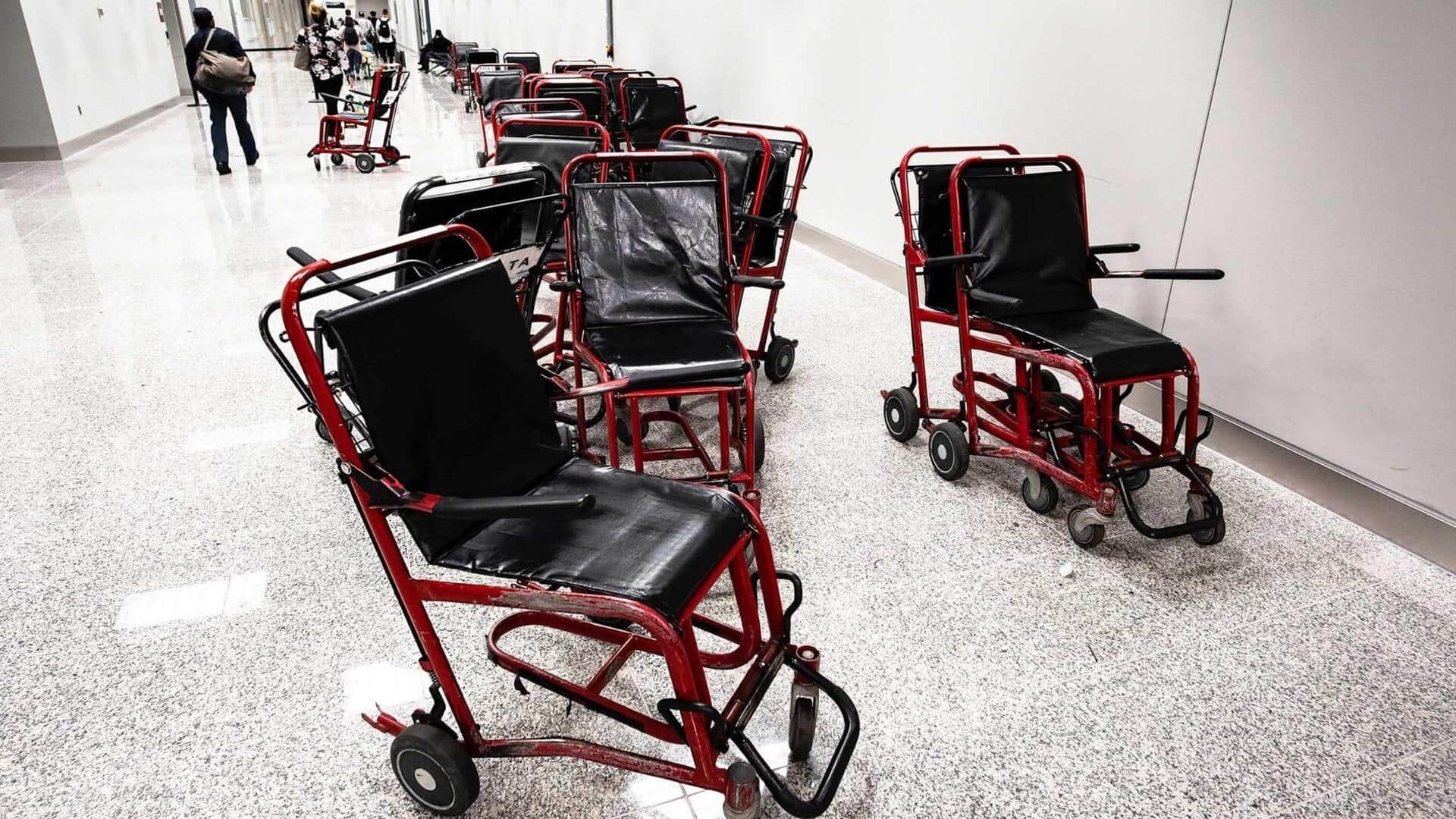
Fit passengers seeking wheelchairs at airports may have to pay
What's the story
The Directorate General of Civil Aviation (DGCA) has proposed new regulations to prevent the misuse of wheelchair facilities at airports. The draft regulation allows airlines to charge passengers who are physically fit but request wheelchairs. Suggestions on this draft, known as Civil Aviation Requirement (CAR), have been invited from the public until September 19.
Resource strain
Misuse of wheelchair services
Officials say many travelers misuse wheelchair services to skip long queues at immigration and security. This makes it difficult for those who genuinely need assistance, such as elderly or differently-abled passengers. Airlines have reported multiple unnecessary requests on certain flights, making it hard to accommodate those in real need.
Upcoming hearing
Proposal comes ahead of court hearing
The proposal comes ahead of a Bombay High Court hearing on September 25. In April, the court formed a committee headed by a retired judge to look into wheelchair availability and issues faced by elderly and differently abled passengers. The court had stressed that access to such facilities is a "fundamental human right."
Shared duty
Joint responsibility of airlines and airport operators
The DGCA draft also states that providing wheelchairs will be a joint responsibility of airlines and airport operators. Airport operators will have to set up special drop-off points for passengers who pre-book wheelchairs and ensure designated areas inside terminals for easy access. This is aimed at improving the availability of wheelchairs and making air travel more inclusive.
Public input
Public feedback sought on proposed regulations
The DGCA is seeking public feedback on the proposed regulations, which are aimed at improving facilities for passengers while easing operational challenges for airlines and airports. Experts and stakeholders have stressed that all perspectives must be considered before finalizing the rule. The step is intended to improve facilities for passengers while easing operational challenges for airlines and airports alike.